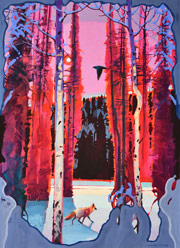Etchings by Stephen Quiller
To Purchase: Contact the Quiller Gallery at 719-658-2741 or info@quillergallery.com. Each etching is original, "hand pulled" and signed by Stephen Quiller, and part of a limited edition. Unframed.
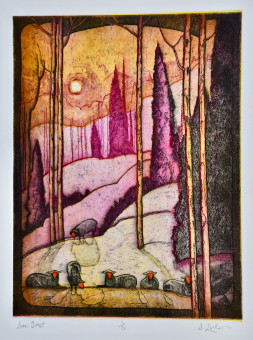
Sun Burst
12" X 16
three color etching/ ed. 50
$375 unframed
$550 framed
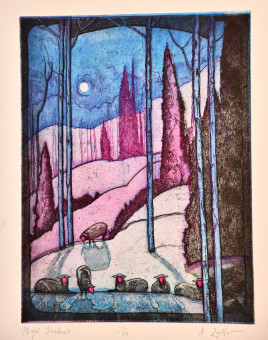
Night Shadows
12" x 16"
three color etrching/ ed. 50
$375 unframed
$550 framed
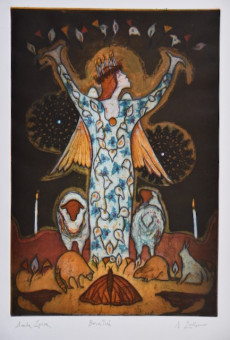
Santa Lucia
18" X 12"
4 color, 4 plate etching
$590 unframed, $750 framed
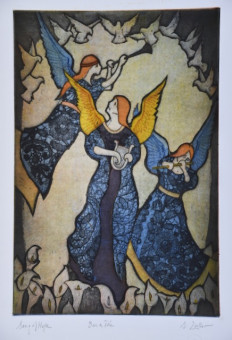
Song of Hope
18" X 12"
4 color, 4 plate etching
$590 unframed, $750 framed
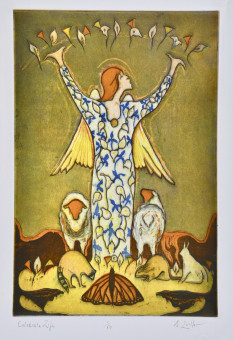
Celebrate Life
18" X 12"
4 color etching
$790 unframed / $950 framed
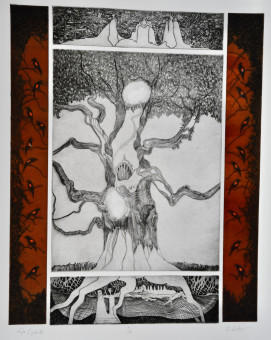
Life Cycle III
27" X 21 1/2"
5 plate, multi-color etching
$750 unframed
$950 framed
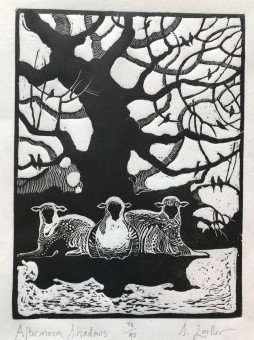
Afternoon Shadows
8" X 6"
wood engraving
$150 unframed / $250 framed
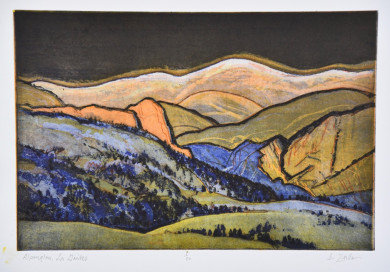
Alpenglow, La Garitas
13" X 18 1/2"
four color intaglio etching
$525 / $695 framed
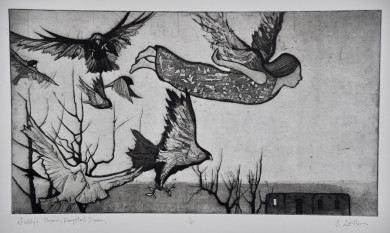
Daddy's Dream, Daughter's Dream
12 1/2" X 21"
intaglio
$290/ framed $415
4415
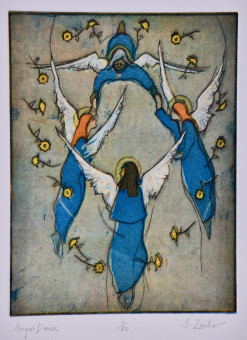
Angel Dance
13" X 10"
four color intaglio
$290/ $425 framed
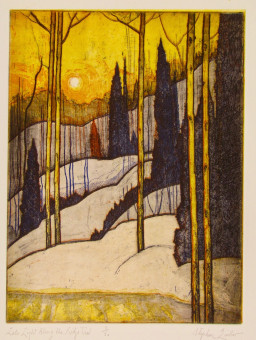
Late Light Along the Ridge Trail
16" X 12"
4 color, 4 plate intaglio etching- edition 50
$750/ $890
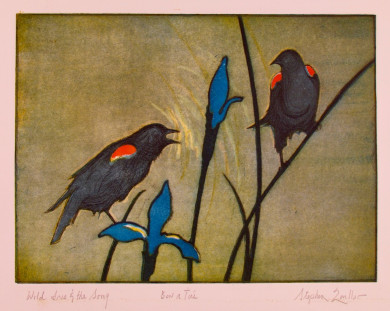
Wild Iris & the Song
10 1/2" X 13"
3 color etching plus hand color
$350 unframed
$495 framed
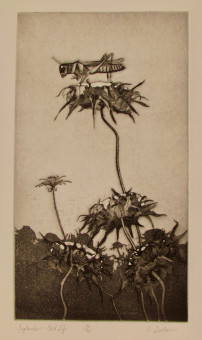
September Still Life
18" X 10"
etching
$395/ framed $525
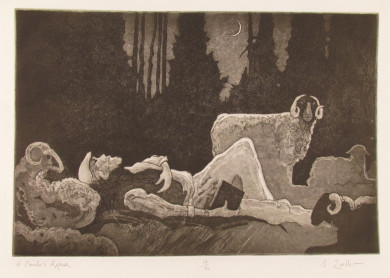
Painter's Repose
18" X 12"
etching
$350/ framed $490

Zocolo
3" X 5"
etching
$90/ framed $165
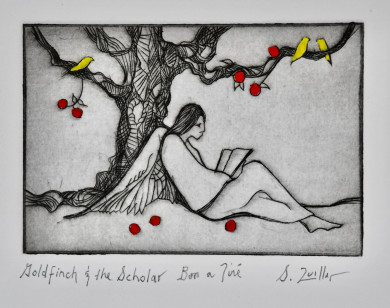
Goldfinch and the Scholar
4" X 6"
etching
$150 unframed
$250 framed

Life Force II
6" X 4"
etching
$125 unframed
$225 framed
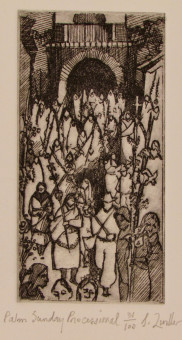
Palm Sunday Processional
6" X 3"
etching
$90/ framed $175
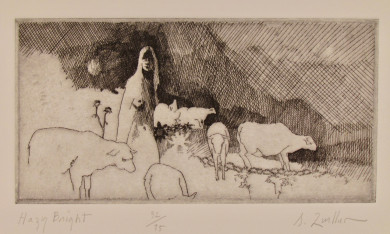
Hazy Bright
4" X 8"
etching
$150/ framed $225
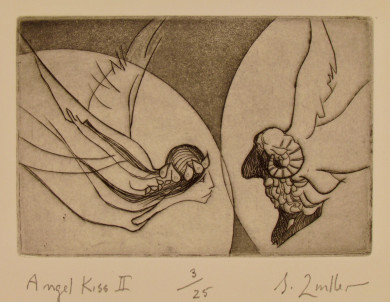
Angel Kiss II
4" X 6"
etching
$125/ framed $225
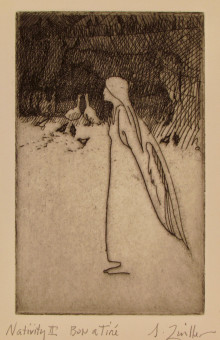
Nativity II
6 1/2" X 4"
etching
$25/ $225
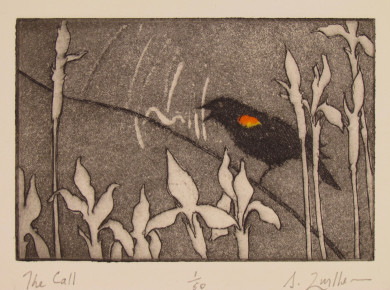
The Call
4" X 6"
etching with hand color
$125/ framed $225
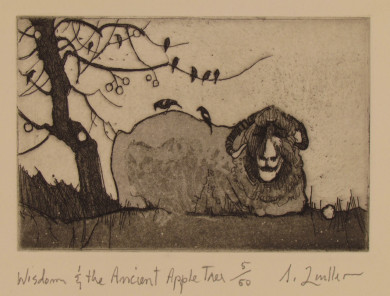
Wisdom & the Ancient Apple Tree
4" X 6"
etching
$125/ framed $225
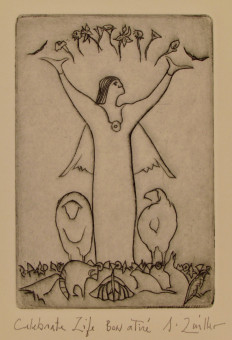
Celebrate Life
6" X 4"
etching
$125/ framed $225
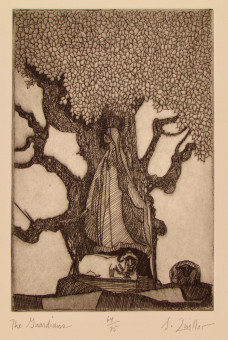
The Guardians
9" X 6"
etching
$150/ framed $250
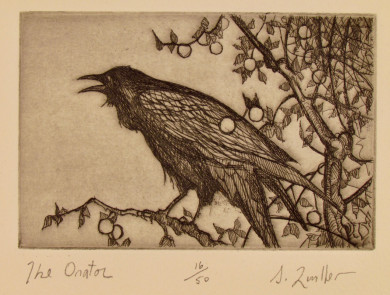
The Orator
4" X 6"
etching
$125/ framed $225
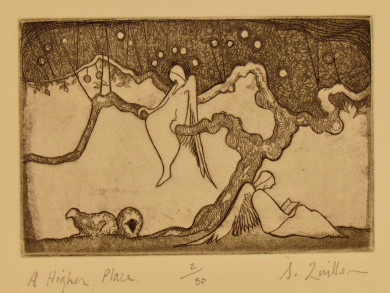
A Higher Place
4" X 6"
etching
$125 framed $225
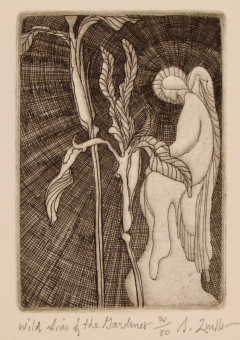
Wild Iris & the Gardener
etching
5" X 3 1/2" etching
$125/ framed $200
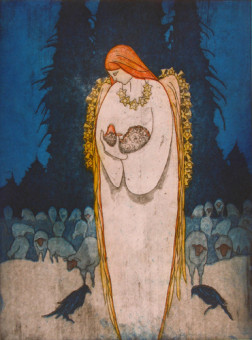
Midnight Madonna
Edition sold out
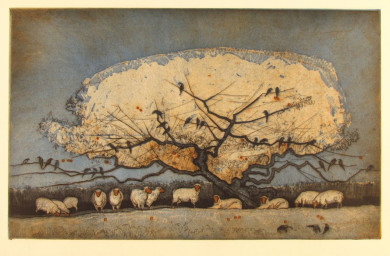
Winter Apples
Three color etching
Edition sold out
15" X 20"
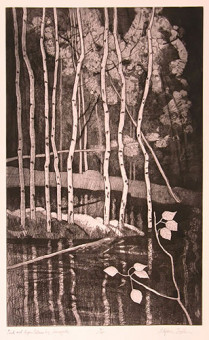
Pond and Aspen Patterns By Sunnyside
Unframed: $495
Framed: $695
Intaglio
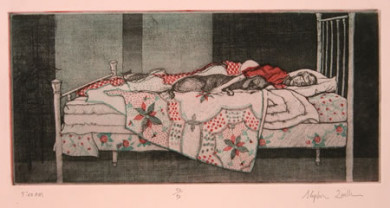
5:00 am
Unframed: $350
Framed: $490
Intaglio

Cross Country
Unframed: $75 (9 x 2 inches)
Framed: $150
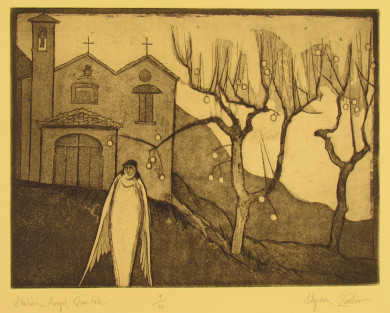
Italian Angel, Quintole
etching on cream paper
9" X 12"
$225 unframed, $375 framed
About the Etchings
These are original etchings, hand pulled in the artist's studio and signed in a very limited and numbered edition. In most prints, the etching ink that is used is Charbonnel, a superior quality French intaglio ink. French and Italian printmaking papers are used to pull each print and they are of archival quality.
Many people are confused as to what an original print is. This is not a photo reproduction process but rather totally an original, creative hand-done process by the artist. This fine art etching process dates back to the 16th century and such artists as Rembrandt, Turner, Whistler, Zorn, and John Sloan have pulled lasting images.
The etching process is as follows: First an 18-gauge copper or zinc plate is cut to size and a thin coat of liquid asphaltum called “hard ground” is brushed on to cover the plate. When the hard ground is completely dry, a pointed metal drawing tool called an etching needle is used to scribe through the ground to expose a shiny line of metal wherever it is scratched. This tool is used to draw the entire image on the plate.
When the drawing is completed, the plate is submerged in an acid bath. This bath can be a solution of 9 to 1 water and nitric acid. The acid “eats” down into the exposed metal line and resists the ground. A shallow line or deep line is created by the amount of time the plate is left in the acid bath.
When the plate has been properly etched, it is removed from the bath and the hard ground is removed with mineral spirits. The cleaned plate is now inked and a leather dauber is used to force the ink into the recessed etched lines. The plate is warmed and cheesecloth is used to lightly and carefully remove the surface ink. The plate is then placed on the etching press bed.
Paper is cut to size, soaked in water, blotted, and placed on top of the etching. Three felt blankets are placed over the plate and paper and they are cranked through the press under heavy pressure of two metal rollers, one above and one below the press bed. The felts are lifted and the paper removed from the etching plate. The recessed ink from the plate has been transferred to the paper and the etching is complete. The print then dries for three days between blotting paper so that the print does not buckle.



































